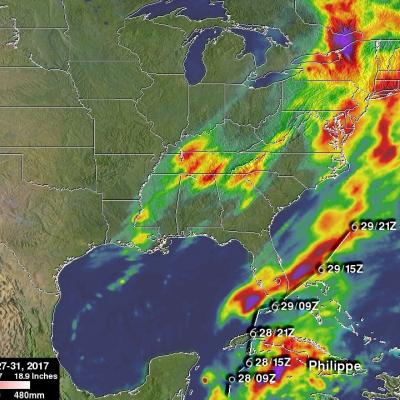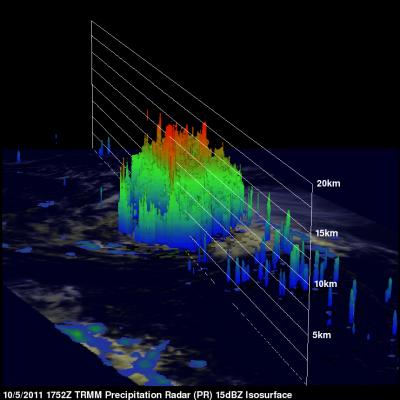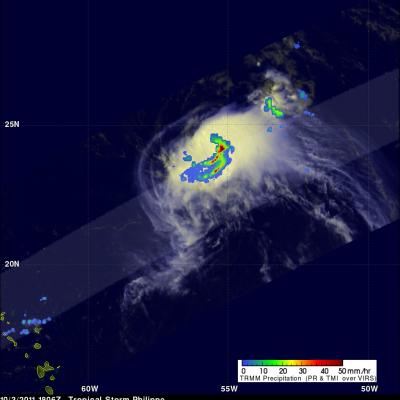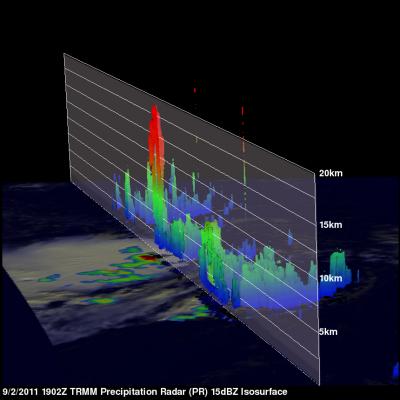IMERG Measures Rainfall From Tropical Storm Philippe Plus Northeast Low
NASA's Integrated Multi-satellitE Retrievals (IMERG) data were used in this analysis to show total rainfall accumulation estimates during the period from October 27 - 31, 2017. Tropical storm Philippe formed and dissipated during that period. The tropical storm formed over the western Caribbean from tropical depression eighteen on October 28, 2017. Philippe then drenched western Cuba as it moved toward the northeast. It dropped a reported 10 inches (254 mm) of rain over southeastern Florida before dissipating in the Atlantic Ocean. Moisture from Philippe's remnants added to heavy rainfall






